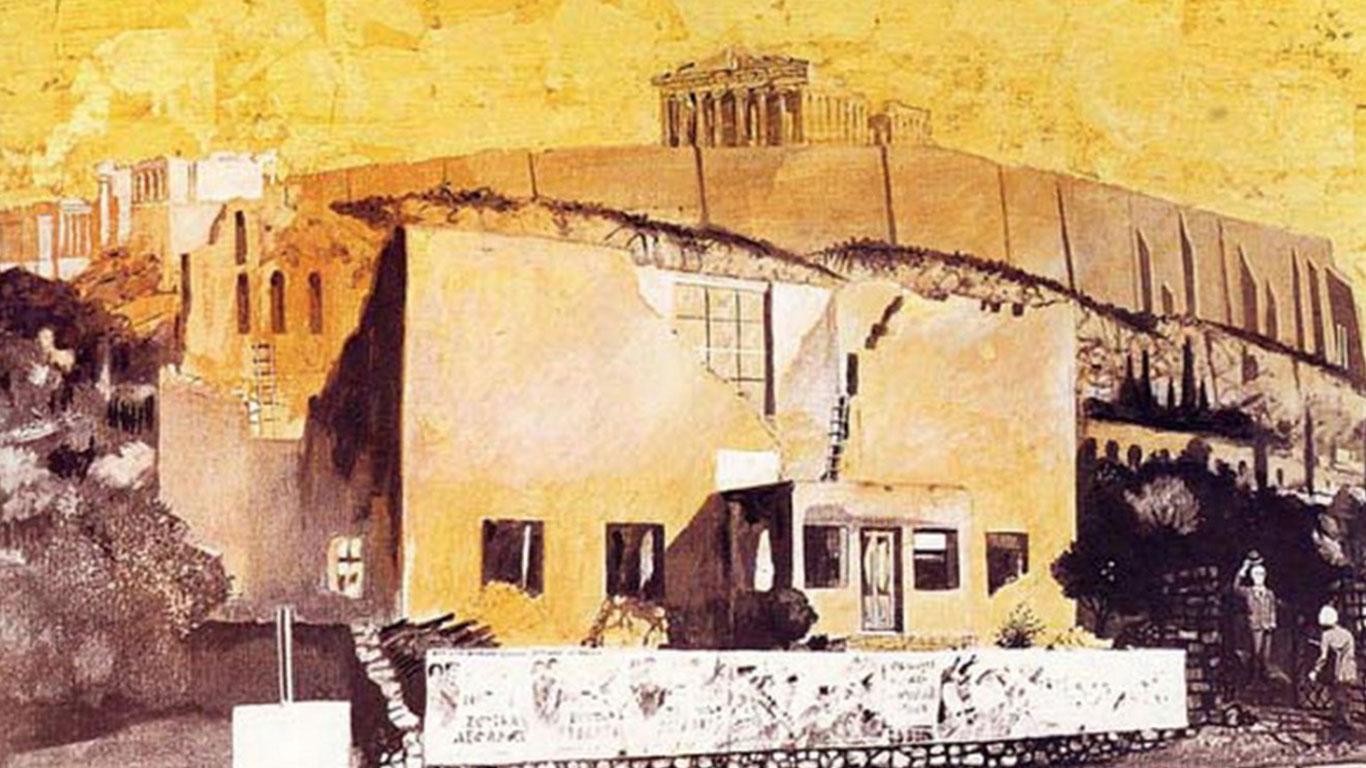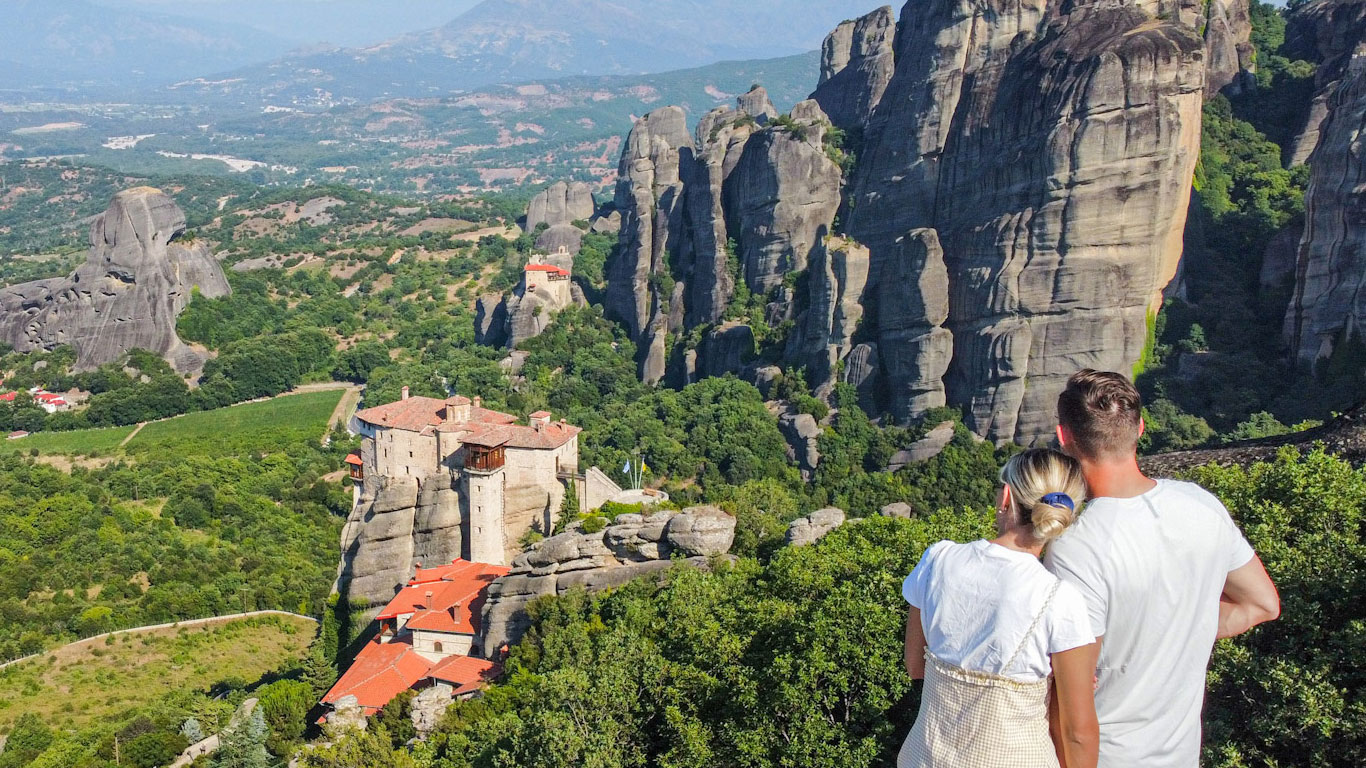
Bauhaus architecture beneath Acropolis
Bauhaus architecture beneath Acropolis
Posted on September 28, 2021
No matter how strange it may sound today, there was once a house built right beneath the Parthenon. And not so long ago, actually. We are taking you back to 1923 when a very famous Greek artist used to live on the Acropolis foothills. His name: Konstantinos Parthenis.
Konstantinos Parthenis lived between 1878-1967. A groundbreaking personality with great influence on the way artists used to perceive themselves, their work, and their offer at the beginning of the 20th century. Parthenis worked very hard for a radical renewal in Greek aesthetics, artistic education, and the meaning of Greekness. His work, although immense, did not get the recognition it deserved in his era. He was very well-educated -studied for many years abroad (Austria, Germany, France). He studied the origins of the modernist movement from its birth, in its mother countries. As a result, he became a real modernist, inspired by his own teachers.
A word about Greek aesthetics in the 20th century
Parthenis started a great effort to introduce the fundamentals of his education to the Athens School of Fine Arts. Along with other colleagues, they tried to renew teaching. Back then, the principals of the Munich school had still a great impact on Greek aesthetics. In addition, realism was an absolute prerequisite for a painting. It was a powerful worthiness criterion. Under this realism dominance, Parthenis proposed a whole new way to depict reality. His method included changing aspects and ratio of the subject, in order to depict emotions, not standing, breathless objects. His techniques were considered almost scandalous. For the school, the ideal artistic representation was close to photography, with a strong theoretical approach supporting it.
The birth of a concept named “Greekness”
Parthenis was very intelligent, both as a person and an artist. Having deep knowledge of techniques, he incorporated distinctive traces of older artistic movements in his own subjects. Eventually, he created a unique style. His main domain of interest had always been the emotions deriving from a picture. In his art, we can observe elements that belong to impressionism and Art Nouveau. Furthermore, the fundamentals of Cezanne’s teaching and manners are obvious. However different, all these coexist in harmony and depict harmony.
All these different-oriented elements in his style were embraced with genuine pictures of the Greek past in his paintings. In his work, we can find red and black-figured forms we also find on ancient vessels and amphoras. He also used techniques that originated in Byzantine art. Most of them were invented to promote a depiction of the world thriving without deceitful material lust. This combination was such an innovation for Greek art, that opened the way for Greekness to emerge.
The artist was a close friend of D. Pikionis and also a neighbor of another well-known artist, Spyros Vassiliou. These three men did not share just the same city quarter where they lived or worked. They had something stronger in common: a mindset and a vision about what Greece is, how we perceive it. Which are the ways to depict it and describe it, without being a fraud.
The house as the apple of discord
Parthenis and Pikionis worked together on the architectural planning of Parthenis’ house. The plot location was close to the entrance of the Odeon of Herodes Atticus. The house was a pure Bauhaus construction, a simple, eye-catching rectangle. No ornaments upon it -and how could there be any, with the marbles in such a close distance! The artist showed great respect to the Erechtheion by leaving his house as simple as he could. As we said, it was a true Bauhaus building (1918-1933, just a mention!).
Nowadays, the house no longer stands beneath the Acropolis. There was an official decision for demolition already in the ’50s. But, in the end, the demolition took place after Parthenis’ death, in 1967. While he was alive, he refused the destruction of his home and atelier by all means. He once threatened to commit suicide and destroy all his paintings if the officials insisted on destructing the building. Even though his home isn’t there anymore, not even a sign about the pioneer painter, we can still observe the ruins of the house. Still grounded in one of the paved paths Pikionis designed, close to the Odeon of Herodes Atticus.
image sources: Lifo mag, Spyros Vassiliou archive













